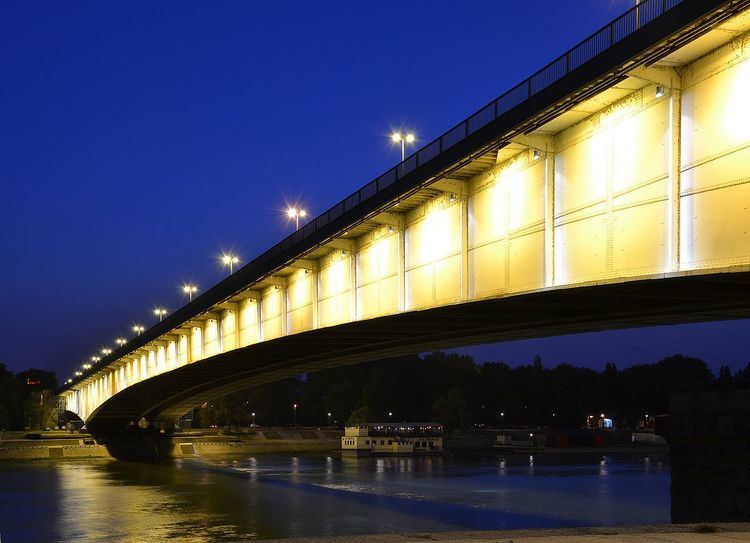Longest span 261 m Height 14 m Opened 1957 Architect Danilo Dragojević | Daily traffic 90,000 vehicles Total length 450 m | |
 | ||
Official name Бранков мост / Brankov most Address Sava City, Beograd, Serbia Similar Gazela Bridge, Sava, Old Sava Bridge, Ada Bridge, Pančevo Bridge | ||
Branko s bridge time lapse 360 video
Branko's bridge (Serbian: Бранков мост / Brankov most) is the second-largest bridge (after Gazela) of Belgrade, Serbia, connecting the city center with New Belgrade across Sava river.
The bridge was built in 1957, replacing the former chain-stayed King Aleksandar I Bridge (built by the Société de Construction des Batignolles) that was opened on December 16, 1934 and blown up in 1941. The bridge actually uses lower parts of the former bridge's pylons (decorated by Ivan Meštrović in Serbo-Byzantium style) as outer constraints for its two secondary spans. It has dual carriageway with three lanes in both directions; actually, it consists of two separate constructions in each direction, and the second was finished in 1979. It is 450 m long, made as continuous steel box girder, with central span of 261 m and side spans of 81.5 m each. It is crossed by nearly 90,000 vehicles daily, and traffic congestions are frequent.
German company MAN is behind the original project of the bridge. Belgrade-based "Mostprojekt" company executed the project of doubling the bridge capacity in the 1970s. Head of the project team was Danilo Dragojević.
The name of the bridge is unofficial, and seems to owe it to a bizarre chain of events. Its official name during the communist rule was "Brotherhood and unity bridge" (Most bratstva i jedinstva), but that name never caught up: it was called "bridge in Branko's street" (named after Branko Radičević, Serbian romanticist poet) or "Savski most" (Sava bridge). However, when another writer, Branko Ćopić, committed a suicide by jumping from the bridge in 1984, the current name started circulating and eventually caught up; it is still not clear after which Branko it was named.
